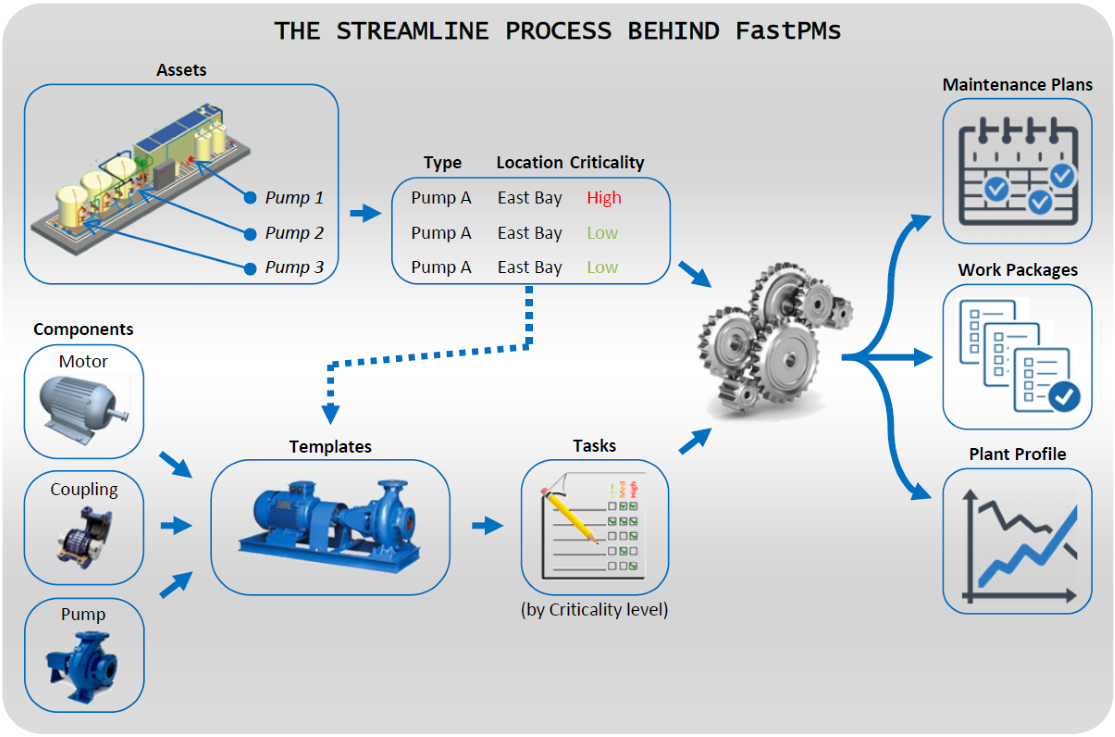In August 2017, Synlait, an innovative and fast growing dairy company based in Christchurch (New Zealand) constacted AMSYST to discuss the review of their preventive maintenance programme. The brief was simple: they wanted a sound base layer of inspections for the different plants on site, as soon as possible.
Fast forward a few months to early December. After 5 weeks of running the FastPMs process on site, 1500 Assets had been reviewed, 293 Inspection Routes had been created, and we were already talking about deploying the process to the rest of the site.
THE FASTPMS PROCESS
Not just a tool, FastPMs is an approach to developing maintenance strategies and inspection routes. It is based on the predicament that Synlait, like many other companies around the globe:
- Would rather use a Failure Modes library with suggested tasks as a starting point, rather than starting a long winded FMECA pprocess from scratch.
- Want to apply and deploy the same maintenance strategies to similar equipment, and harmonise their PMs accross their Asset base.
- Want efficient inspection routes that are easy to manage in their CMMS.
And all of this preferably fast and painless!
AMSYST worked with Synlait’s maintenance and production teams to define:
- Asset types => required to build strandard strategies
- Asset criticality (low, medium, high) => to tailor the amount of predictive tasks applied
- Asset location => to organise the inspection routes
Then the rest of the process was automated… The FastPMs tool allocated the right preventive maintenance tasks, generated the list of routes to be created in the CMMS, as well as a work instruction document for the route, detailing all the activities required, and where to find the assets within the location.

THE RESULTS
After 5 weeks of work, a FastPMs programme was developed for one of Synlait’s factories (1500 Assets):

THE BENEFITS
In a very short amount of time, a base layer of preventive maintenance was put in place, without compromising on sustainability and future growth:
- The tasks are easy to refine/adjust.
- The strategy can evolve easily based on asset criticality or type.
- The strategies are scalable to the other factories, further reducing the implementation time.
But best of all, it didn’t require months of detailed analysis and an entire army of specialists. It simply focuses on the most important aspects of a good and realistic PM programme: fast to implement, easy to manage and scalable for deployment on other lines or factories.


